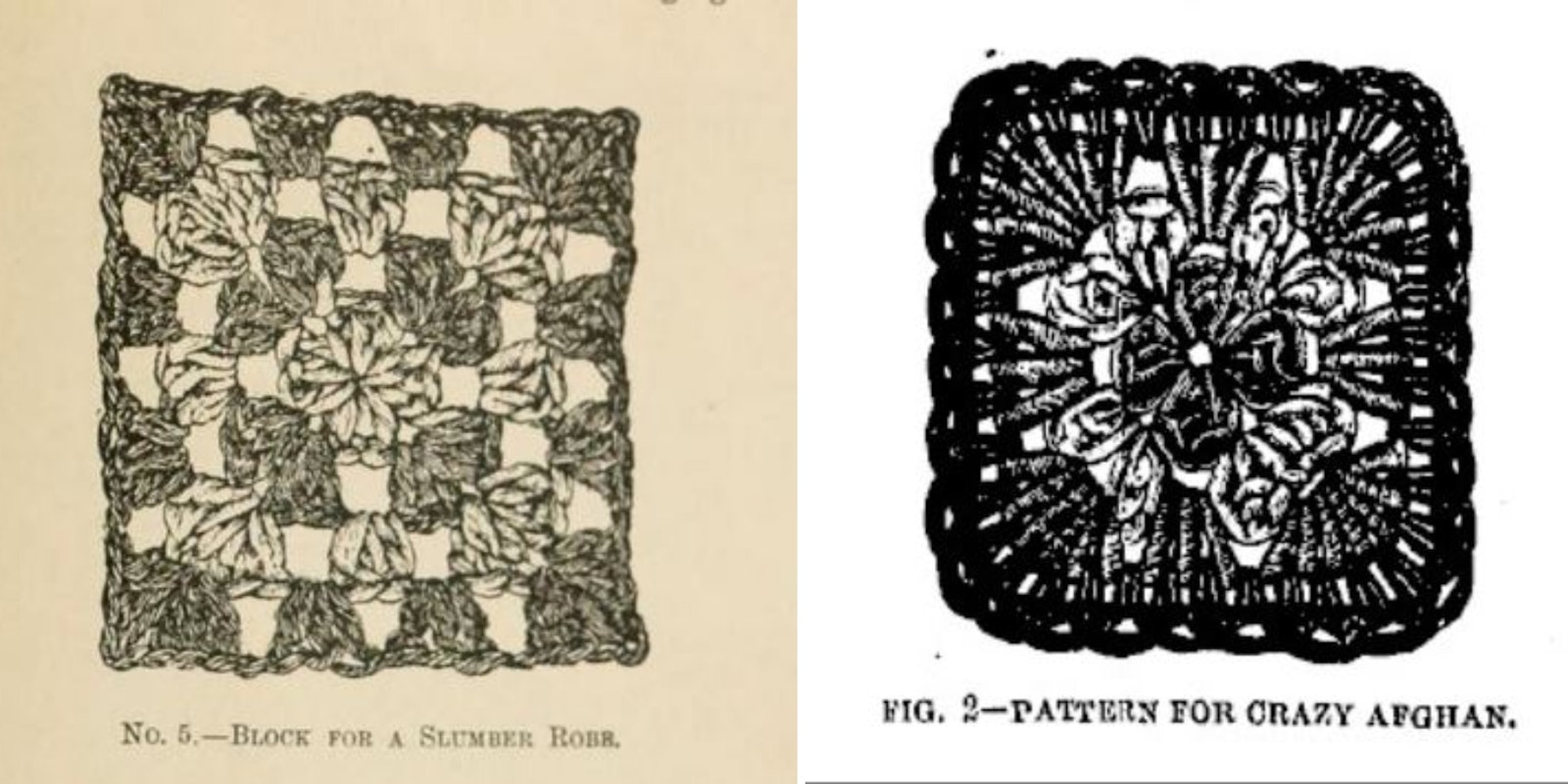As a self-avowed crochet granny square obsessive, I’ve often wondered why this particular crochet motif is called “granny square.” The granny square has been around since the late 1800’s and continues to be popular, delighting modern fashionistas by turning up on catwalks from London to New York. But what is a granny square? Where did it come from, and why is it called a granny square?
What Is a Granny Square?
Worked in the round, the traditional granny square starts at the center and then grows, round by round, until it ends up a square. Constructed of just three stitches—chain stitch, double crochet stitch and slip stitch—the granny square can be made in a large variety of stitch combinations to create different shapes and sizes—squares, of course, but also circles, triangles, rectangles, pentagons, hexagons, and octagons.
 Nontraditional granny squares crocheted in cotton yarn by the author. Photo by Marsha Borden
Nontraditional granny squares crocheted in cotton yarn by the author. Photo by Marsha Borden
Where Did the Granny Square Come From?
A pattern for the granny square was discovered in an 1885 edition of Prairie Farmer Magazine, a weekly newspaper published in Illinois. In The Art of Crocheting, a book by Butterick Publishing Company (1891), there is an engraving of a granny square with the description “no two blocks should be alike, and the colors may be combined to suit the fancy,” but no pattern is included. Weldon’s Practical Needlework (1897) contains a few pattern variations of the granny square, often combined with other crochet needlework stitches. These vintage squares closely resemble what we now refer to as a granny square.
Why Is It Called a Granny Square?
Our “grannies,” or grandmothers, may have loved to work the granny square for many reasons. Those who know the granny square appreciate its portability, the simple yet repetitive nature of its design, the numerous yarn and color combinations that keep it from turning into a bore, and the ease with which it can be put down and picked up again. It’s easy to imagine our thrifty, needlework-loving female ancestors using any combination of granny squares as the building blocks for many projects, including home décor, blankets, and clothing. But why was the moniker “granny square” used, and why did it stick?
 Granny square samples worked in cotton yarn by the author. “True” granny squares are thought to have been bordered in plain black. Photo by Marsha Borden
Granny square samples worked in cotton yarn by the author. “True” granny squares are thought to have been bordered in plain black. Photo by Marsha Borden
The Myth and Mystery of the Granny Square
There is no definitive answer to why the granny square is called the granny square. This is surprising and disappointing. None of these explanations is overly satisfying. But maybe not knowing for sure is part of what keeps the magic and allure of the granny square alive. This popular motif has been around for over 130 years, and it seems certain that it will continue to fascinate and captivate crocheters for many years to come.
Resources
- “All you need to know to make and use beautiful granny squares.” Woman’s Day Granny Squares, no. 1 (1973): 50.
- Art of Crocheting, The. London: The Butterick Publishing Company (1891): 94. Retrieved from Internet Archive website https://archive.org/details/artofcrocheting00lond.
- “Crochet lesson.” Today’s Woman Granny Squares, no. 2 (1976): 75.
- “Housekeeper’s Improvement Club.” Prairie Farmer (1885): 218. Retrieved from Illinois Digital Newspaper Collections https://idnc.library.illinois.edu/?a=d&d=PFR18850404.2.45&e=-------en-20--1--img-txIN----------.
- “The World’s First Granny Square Pattern (Plus 7 More to Make).” The Yarn Queen (blog, 2022). Retrieved from https://theyarnqueen.co.nz/worlds-first-granny-square-pattern/.
- Weldon’s Practical Needlework. The Weldon Company of London (1897): 347.
Marsha Borden is a Connecticut-based needleworker and textile artist. Granny squares are her absolute favorite things to crochet. Find her @marshamakes on Instagram and at marshaborden.com.

